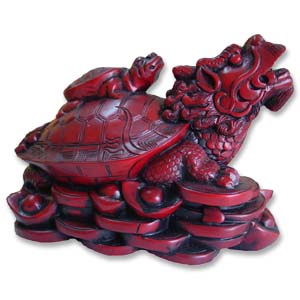 Originating in China almost 6,000 years ago, Feng Shui literally means "wind"(Feng) and "water"(Shui). Feng Shui is also referred to as "Geo-mancy" or "Earth Wisdom".
Originating in China almost 6,000 years ago, Feng Shui literally means "wind"(Feng) and "water"(Shui). Feng Shui is also referred to as "Geo-mancy" or "Earth Wisdom".It is an ancient method of constructing and optimizing residences to bring about happiness, abundance and harmony. It includes architecture, urban planning, interior design, garden design, and placement of objects in our environment. It also involves the layout, framework, materials and colors of building structures. These rules of thumb allow us to make the most ideal arrangement in any given situation.
In ancient China, farms and villages were auspiciously placed within the protective folds of mountains, shielded from harmful winds and nurtured by the gentle, winding streams. The people who practiced these principles prospered in agriculture and trade and grew strong and powerful. They produced social, cultural and military leaders unlike their neighbors who were exposed to harsh winds and inhospitable terrain. The art of Feng Shui was refined over many centuries, producing an abundance of learned scholars.
Traditionally, Feng Shui was considered a highly guarded secret of the Chinese Imperial Court. All Feng Shui Masters were forbidden to release their potentially powerful knowledge to outsiders. The practice of Feng Shui was considered so powerful that it would be devastating in the hands of the enemy. Consequently, knowledge was handed down from father to son within family traditions. The turbulent history of China has only helped to reinforce this tendency and this secrecy often continues, even today.
The Lo Shu Turtle has been said to bring eight different types of heavenly blessings but it is very attuned towards bringing wealth luck. When it is depicted with a baby as it is shown here, it is said to be especially powerful.
To get a free estimate on a full-blown Feng Shui Consultation, visit our website, Feng Shui Style.